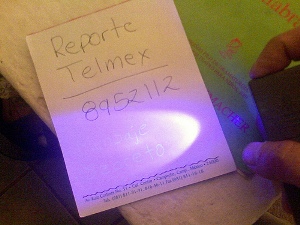
Lastly is the most important biology unit, used to analyze body fluids, DNA, blood factors, hair, fibers, and plant life using biology, biochemistry and microbiology (Delich 3). A very interesting scientist within this unit is a serologist. A serologist studies blood groups and other fluids for classification purposes subsequent to a crime (Kurland 22). Some larger crime laboratories may have units specializing in only photography, toxicology, latent fingerprints, and arson (Delich 3).
Tuesday, April 27, 2010
Biology Unit
Monday, April 26, 2010
Document Analysis Unit

Another well known crime lab is the document analysis unit. This unit is very familiar with ransom notes. The document analysis unit is usually called upon to examine handwriting, typewriting, word processing and computer applications as well as paper and ink (Delich 3). The special method within this unit is called forensic linguistics. Linguistics is used to review the content of communication to identify a speaker and indicate the speaker’s aim. With this special type of document analysis one can determine whether one or more unusual communications are from the same individual (Kurland 22).
Firearm/Ballistics Unit



A firearm unit is used to examine tool marks, weapons, firearms, and bullets (Delich 3). In the firearm unit there are ballistic specialists, they deal with the effects of projectiles, behavior, motion, and most often fire arms and bullets (Kurland 22). The firearms/ballistics unit has become very popular dealing with the infinite crime growth.
Subscribe to:
Posts (Atom)



